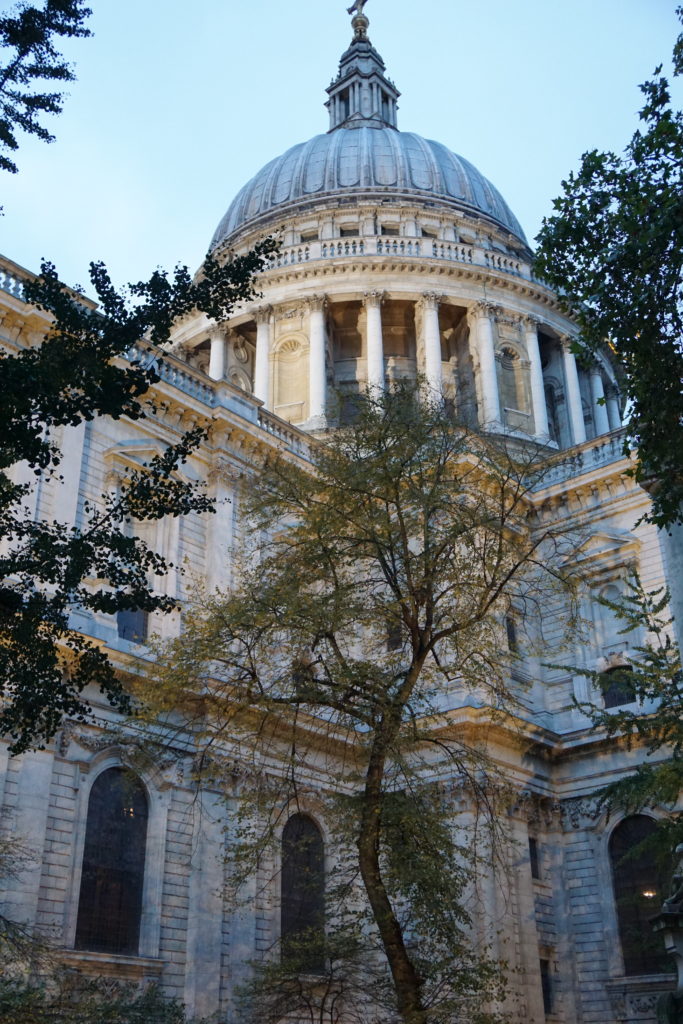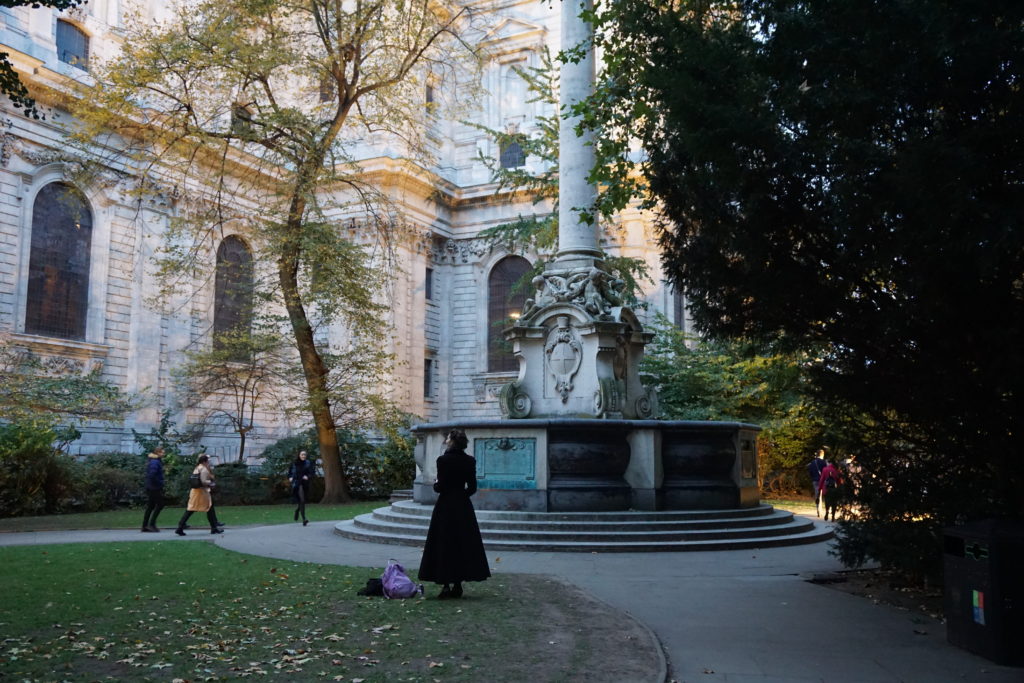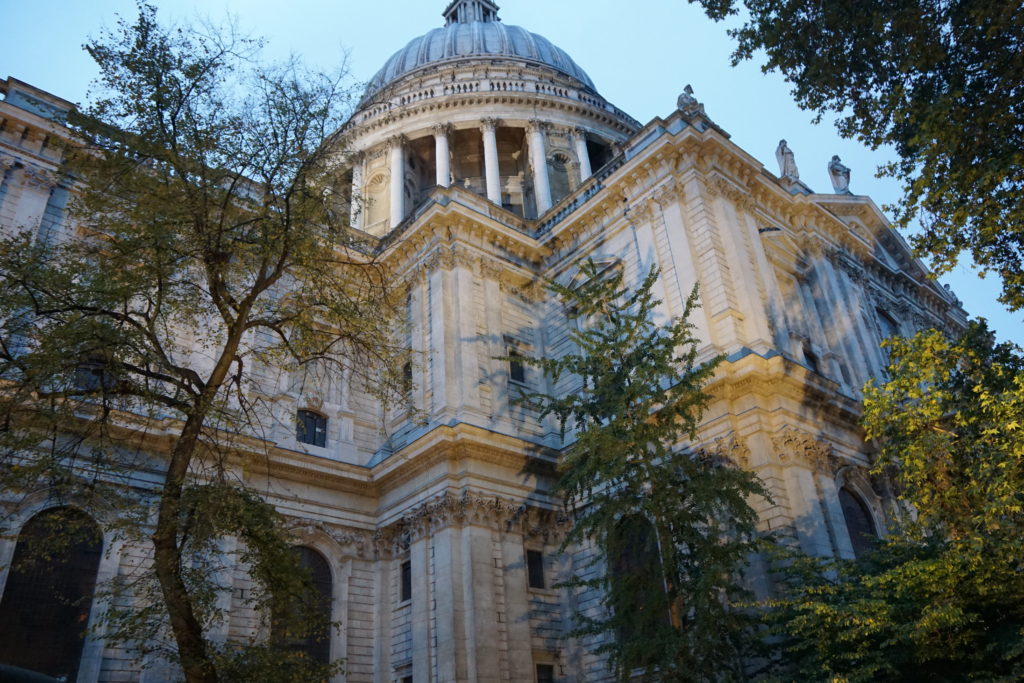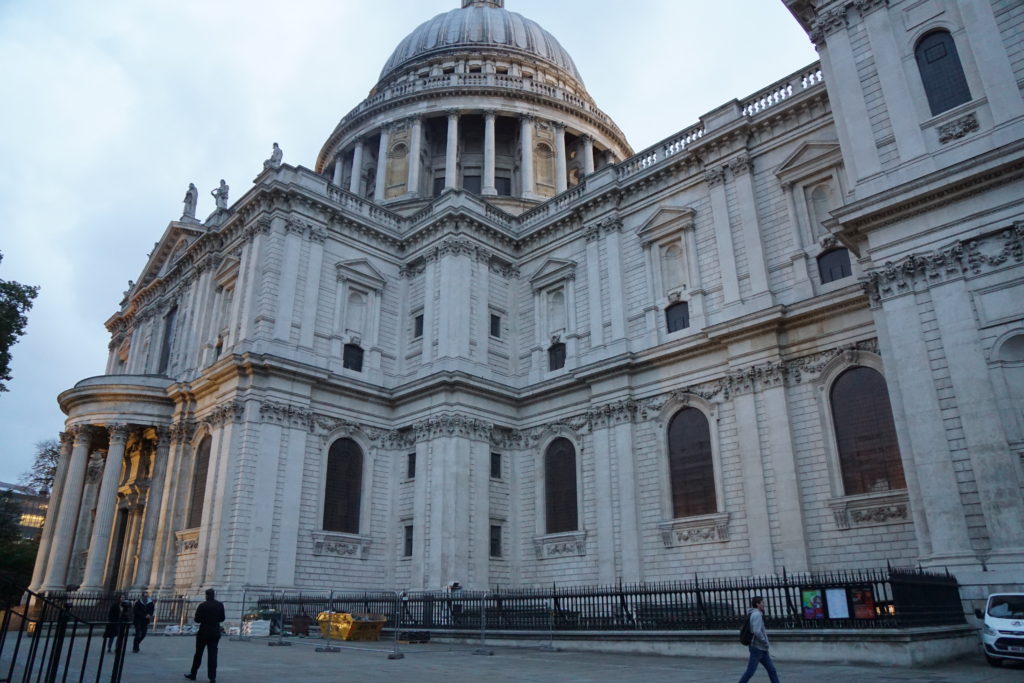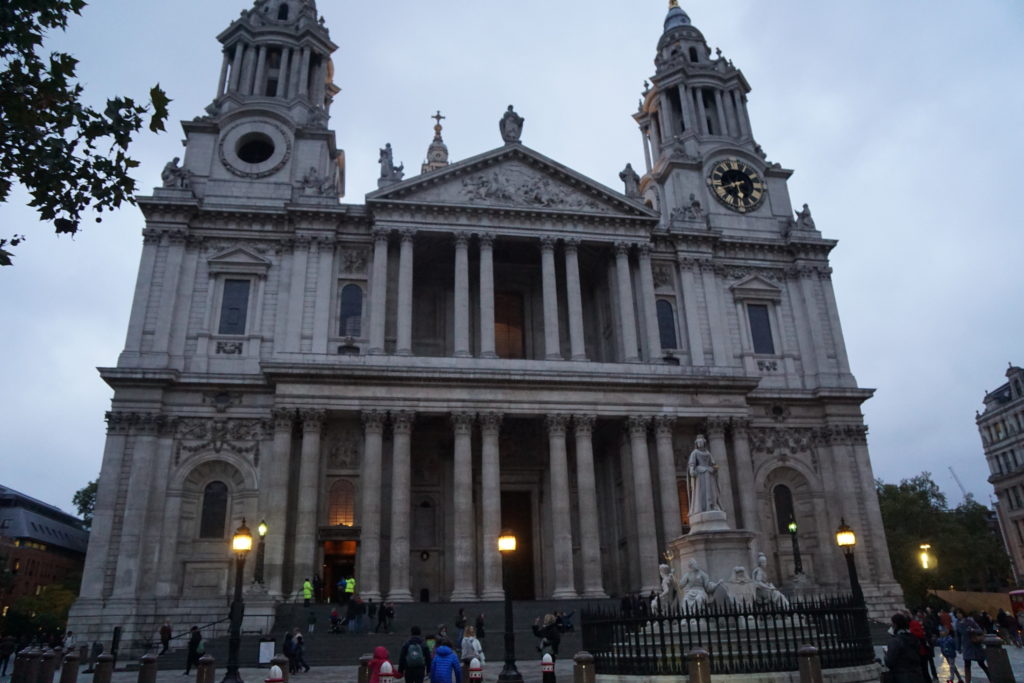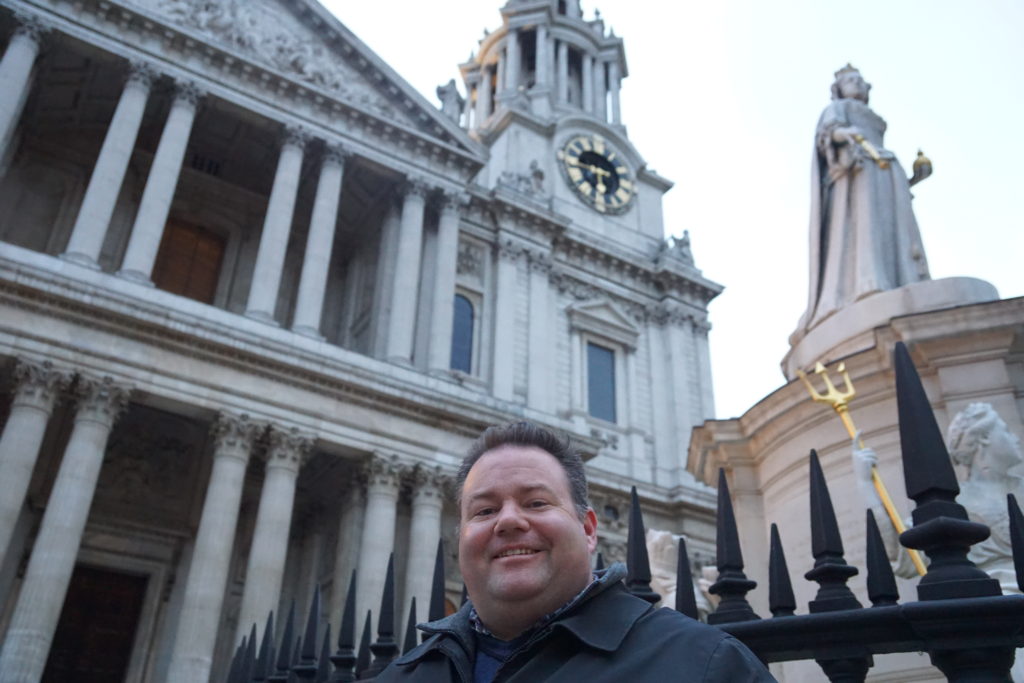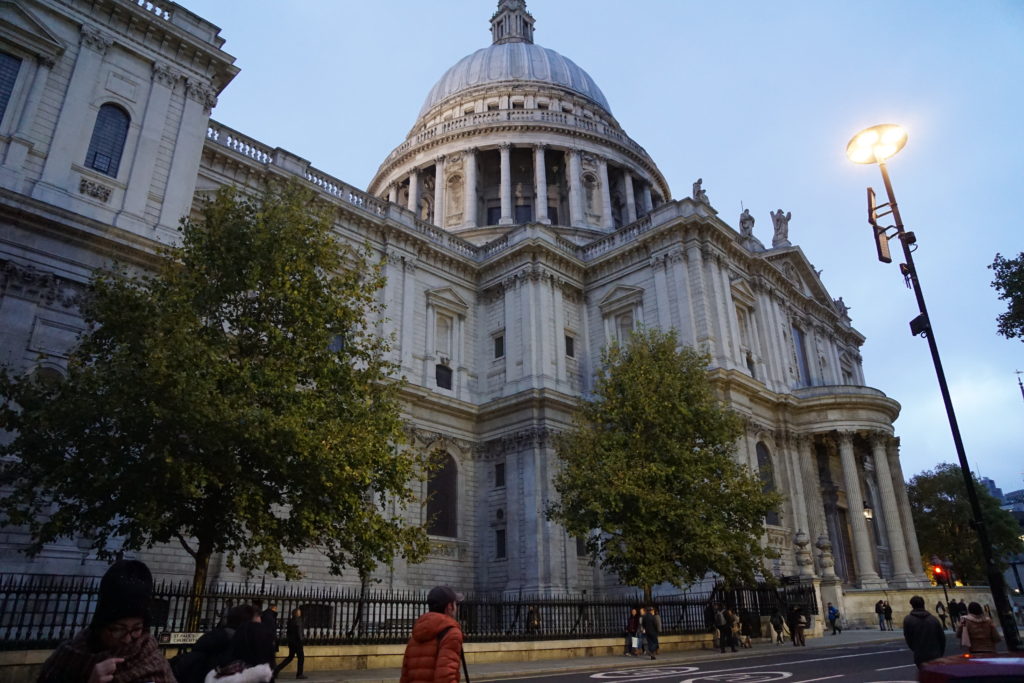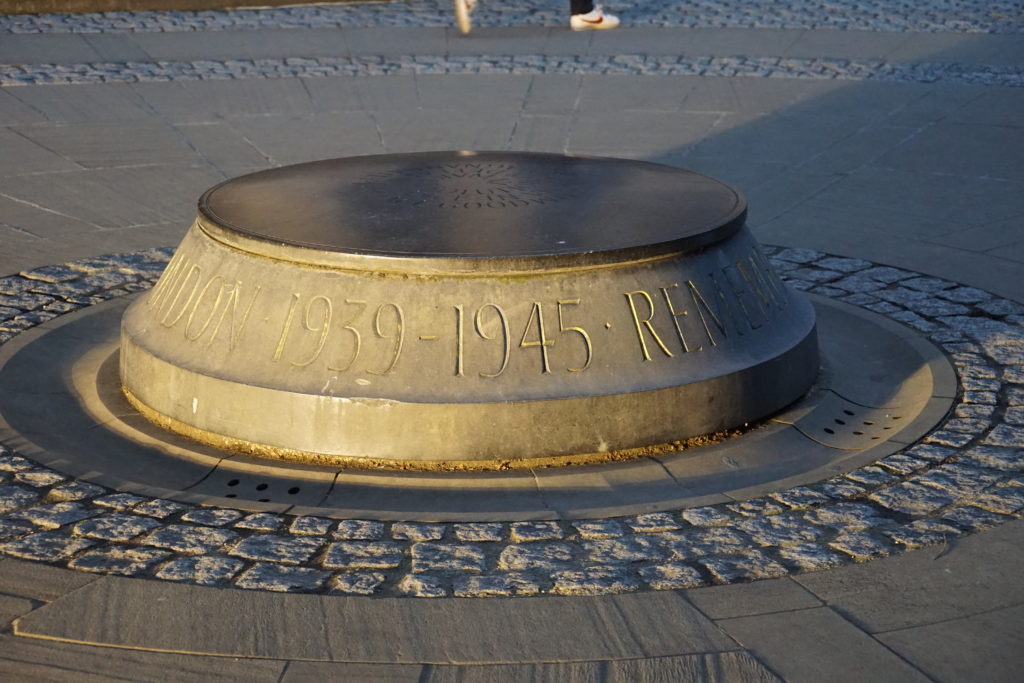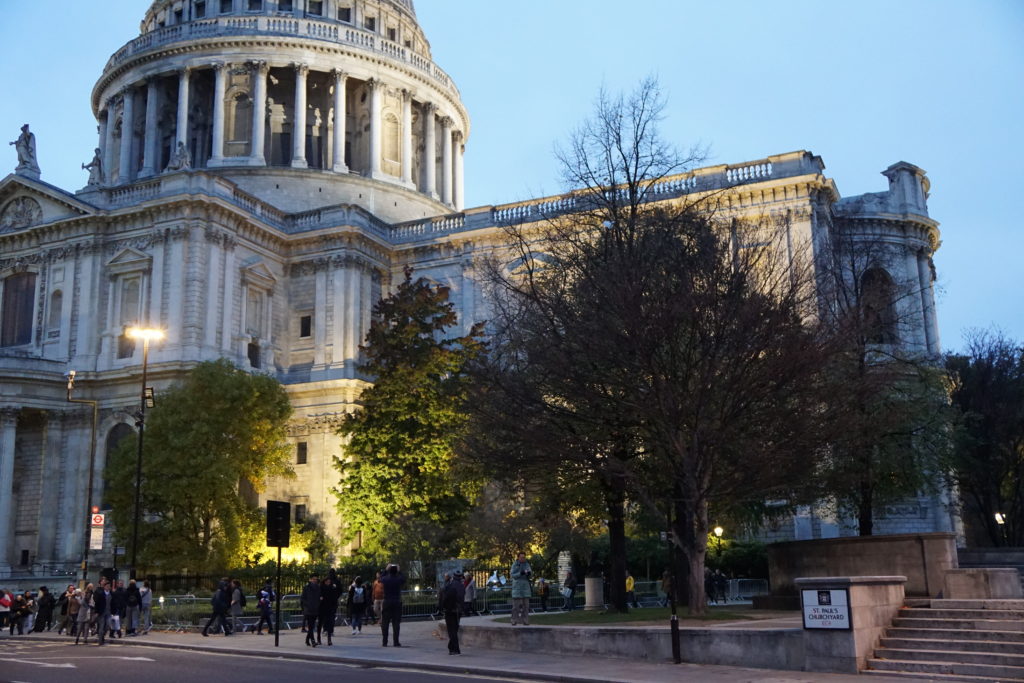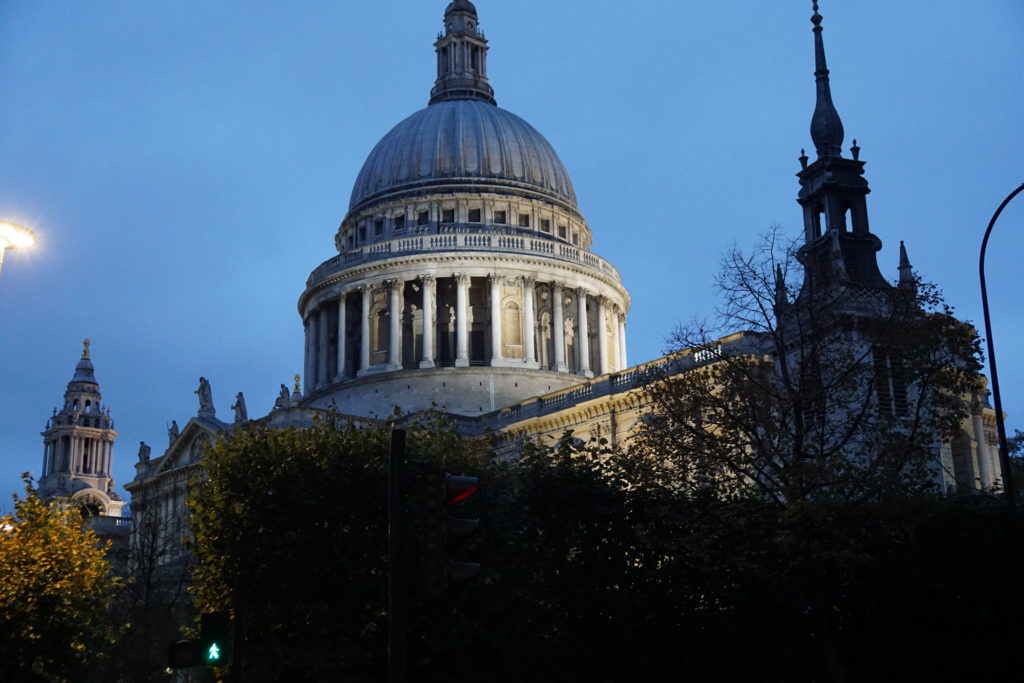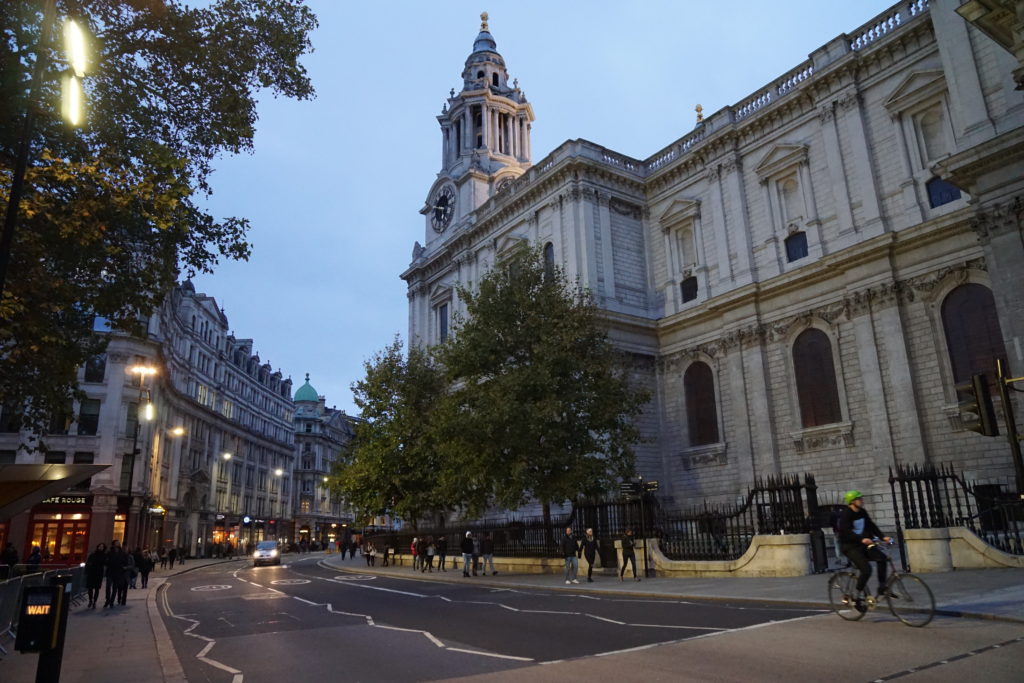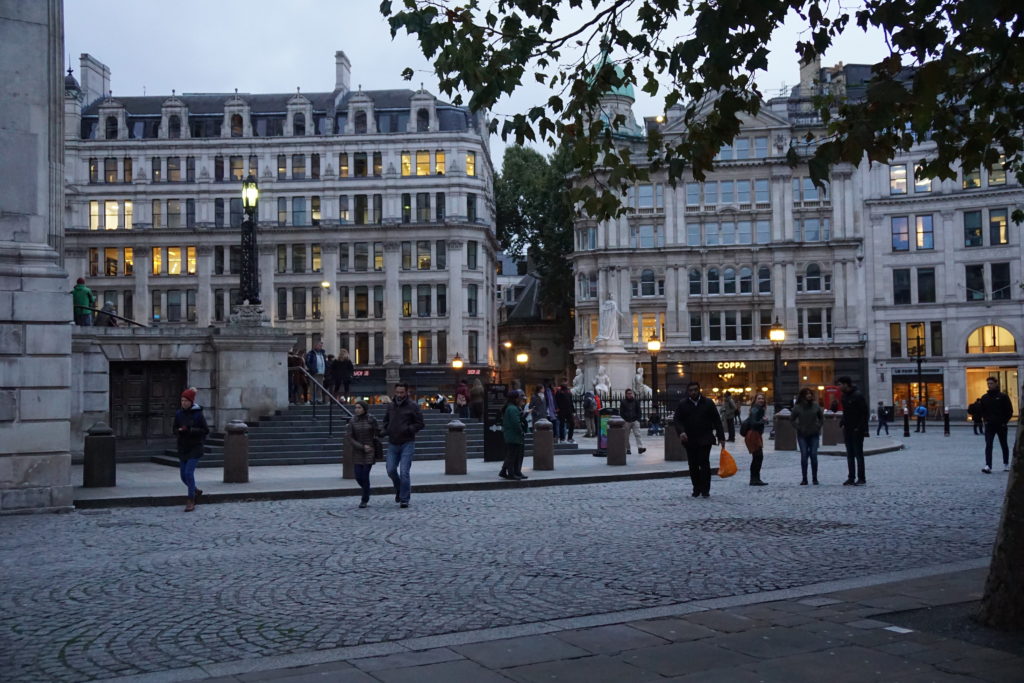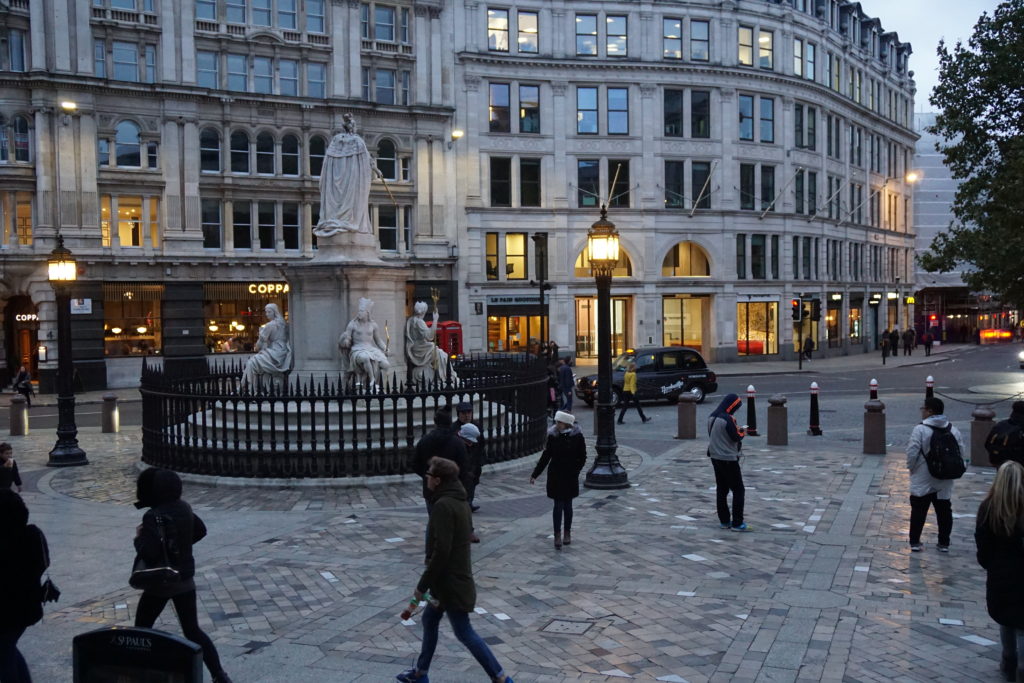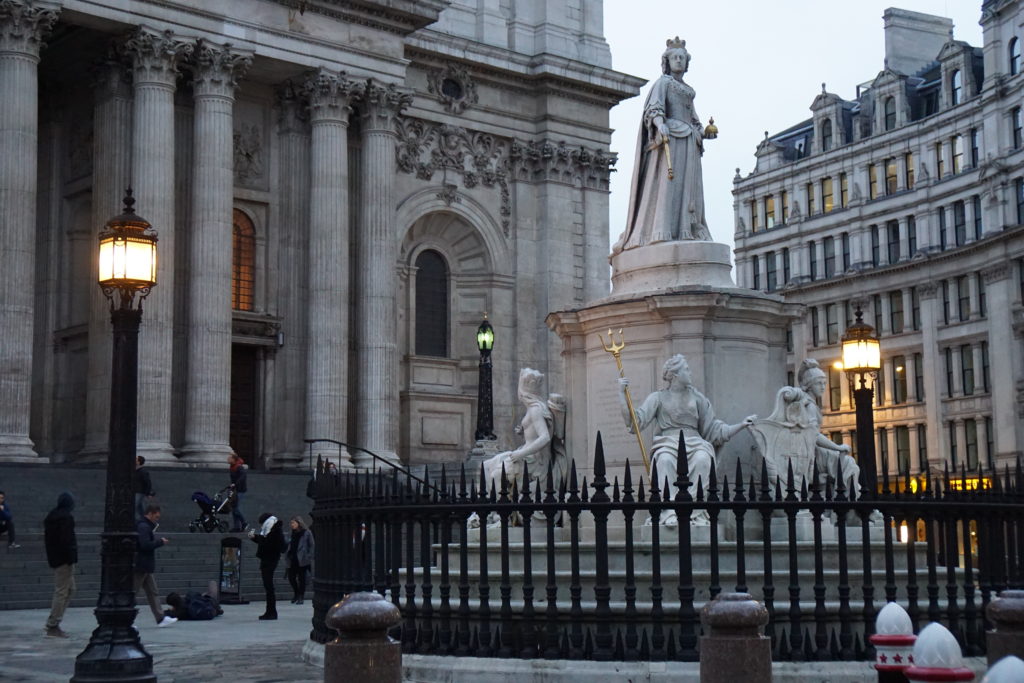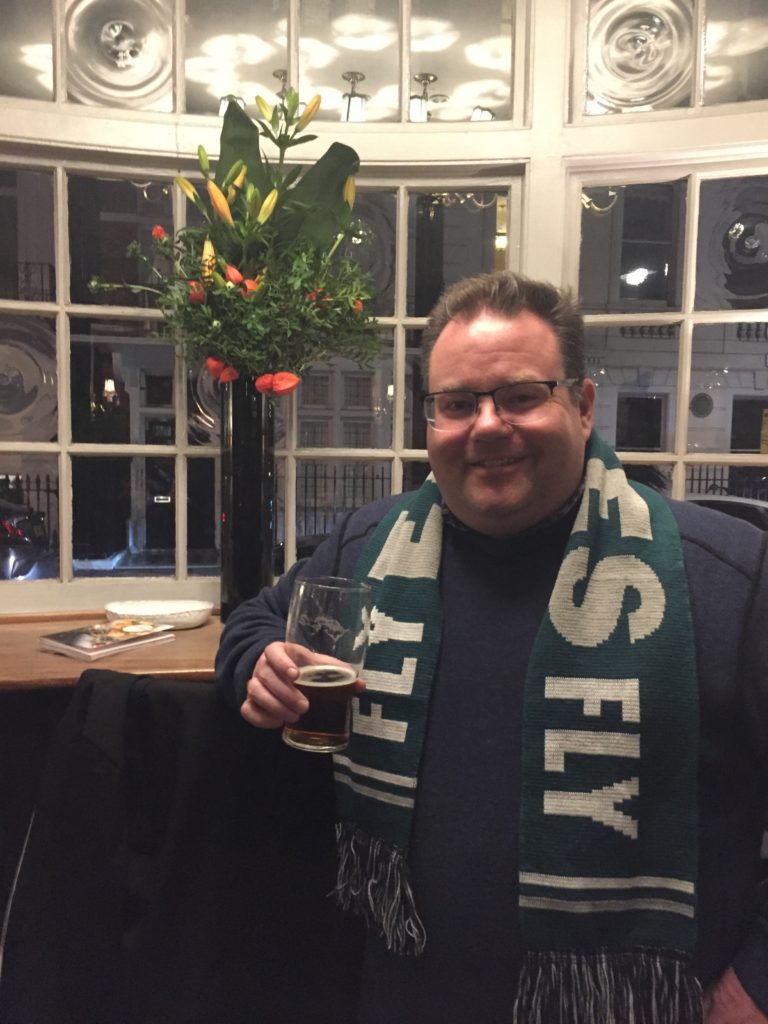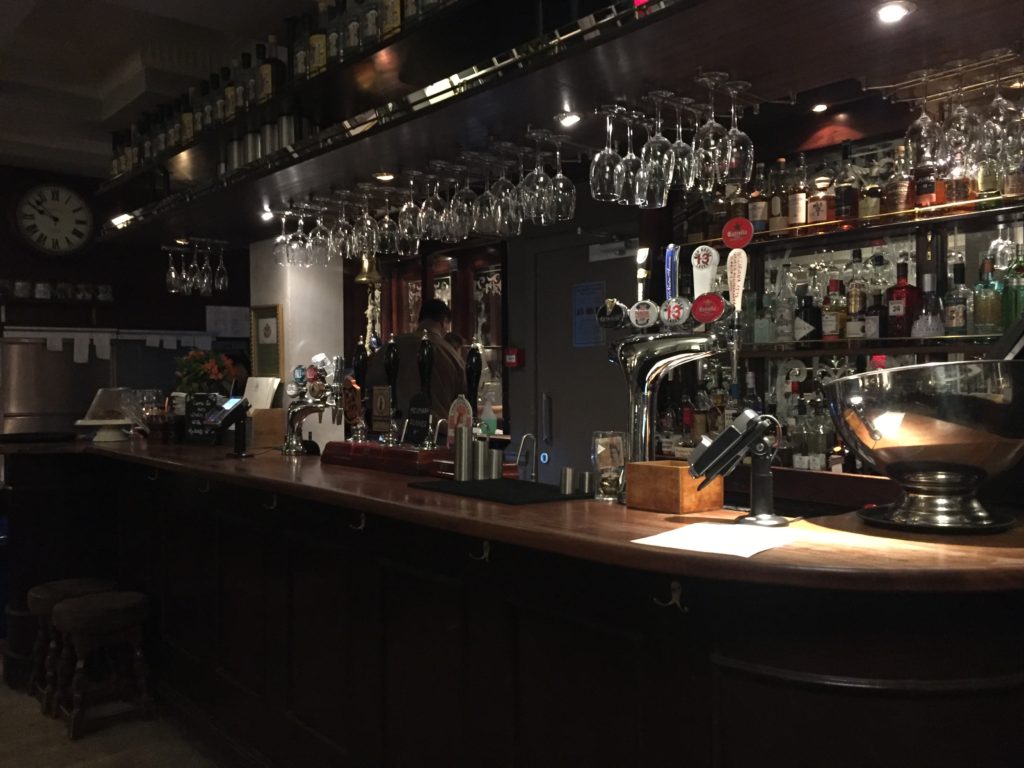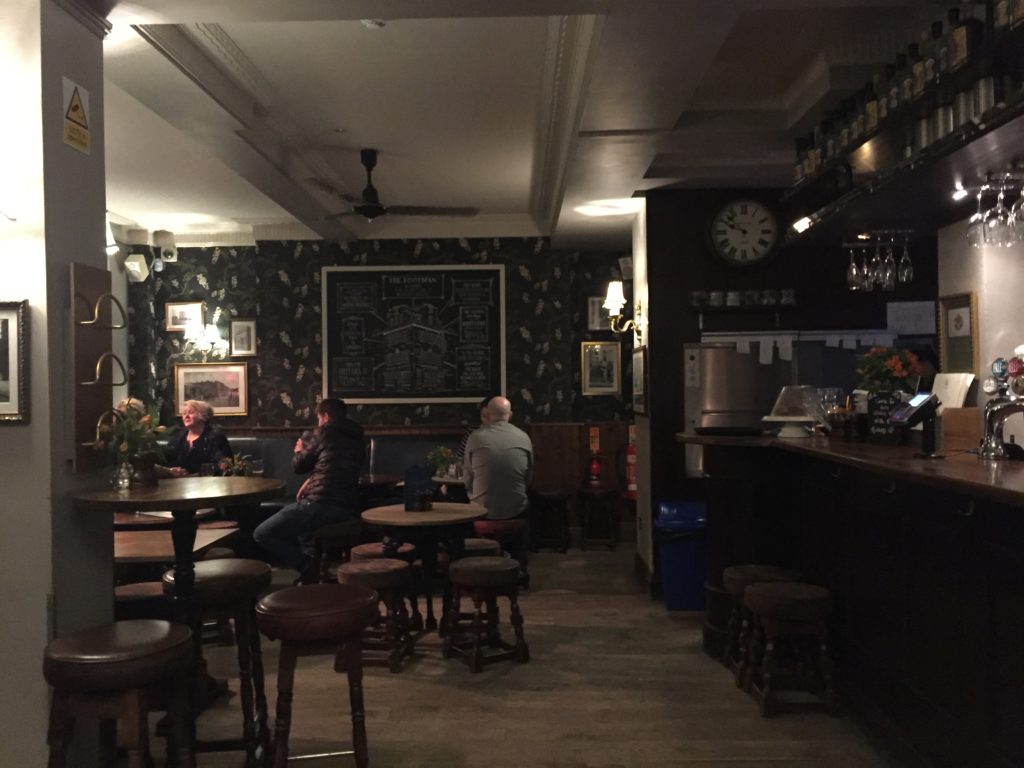St. Paul’s Cathedral is one of the most popular and most recognizable sights in London. We had been in London for a week, but still hadn’t made it. Quite frankly, we were running out of time. Tomorrow we would be watching our beloved Philadelphia Eagles at Wembley Stadium; the following day we were headed home. I had all but crossed it off the list.
It was now Saturday evening—roughly 6pm—and we had just finished having dinner at the Victoria Pub in Paddington. It was early enough that we could get some more sightseeing in, but late enough that any attractions would be closed. This left us with very few options. We could go back to the hotel and relax, find another pub somewhere, go shopping at Harrods, or take advantage of the opportunity to knock another attraction off our list.
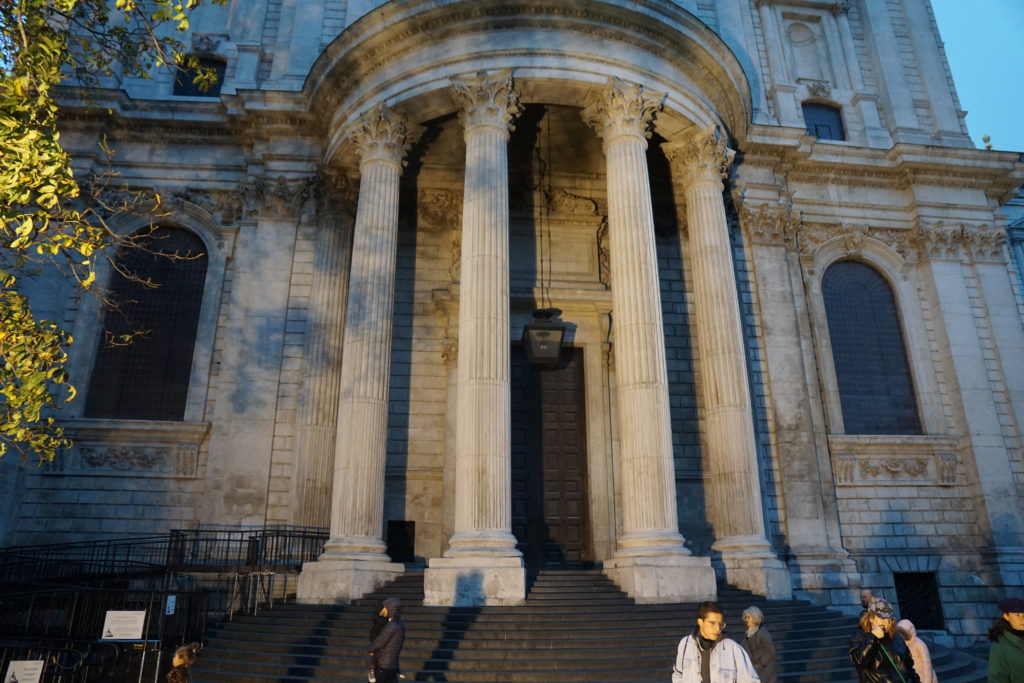
There were plenty of attractions we hadn’t seen, and St. Paul’s Cathedral sat at the top of that list. But—it wouldn’t be open. I had to ponder that over, did we really want to do that? We’d get there, take a look at it, then what? Where would we go from there? I admit, I began to think shopping at Harrods would make better use of our time. In the end, we were talking about St. Paul’s Cathedral. Even if we couldn’t get inside, we should probably check that out.
St. Paul’s Cathedral
- St. Paul’s Cathedral is the fifth church to stand on the site, dating back to 604 AD
- It is an Anglican cathedral, the seat of the Bishop of London, and mother church of the Diocese of London
- It’s style is English Baroque, designed by Sir Christopher Wren as part of a rebuilding plan following the Great Fire of London in 1666, to replace the largely destroyed church that stood at the location prior—referred to as Old St. Paul’s Cathedral
- Wren is hired to rebuild St. Paul’s in 1668
- First service is held in 1697
- It was formally declared complete in 1711
- It was the tallest structure in London from the time it was completed in 1711 until 1962 … incredible!
Surviving the Blitz
The Great Fire of London occurred in 1666. The Second Great Fire of London, as coined by an American correspondent, took place on December 29-30, 1940, during one of the most destructive air raids of the Blitz during WWII.
That night, 136 German bombers dropped approximately 100,000 bombs on the city of London, causing roughly 1,500 fires. All the surrounding buildings crumbled in destruction, yet miraculously, St. Paul’s Cathedral survived.
Understanding the loss of the Cathedral would damage the morale of the country, Winston Churchill declared, “St. Paul’s Cathedral must be saved at all costs.”
St. Paul’s Survives, is a famous picture taken that night by The Daily Mail’s chief photographer, Herbert Mason, who was firewatching on the roof of his newspaper’s building. The photo depicts St. Paul’s Cathedral surrounded by smoke, and illuminated by the flames of the surrounding buildings. The image of St. Paul’s Cathedral standing amongst the flames became a symbol for unity amongst the British people throughout the war. On the opposite end, the German media used the photo as propaganda, showcasing the effectiveness of their raids.
Our Visit
Unfortunately—as expected—St. Paul’s Cathedral was closed when we arrived. Nevertheless, I was happy to have made my way to this historic location. It’s sheer size is quite impressionable! In fact, any attempt to get a picture of the cathedral in it’s entirely was a challenge. It’s just too large to fit it into one frame. We slowly made our way around the perimeter of the cathedral, grabbing as many pics as I could along the way, before proceeding on.
The Footman
Following a pretty complete day, it was time to relax. After a quick stop at the hotel, we made our way to the Footman Pub. This pub was only a few hundred feet from our hotel—yet, despite being in London for a week now, somehow … we hadn’t managed to make it there. That would change tonight. It was a great place to grab a few pints and relax. Just in case I hadn’t mentioned it yet, I was developing quite the appreciation for British Pubs—this was no exception!
To enhance our experience, a couple walked in that we recognized from our hotel. Like us, they were in from the Philly area to attend the Eagles game. Not only did we have an enjoyable night, we were able to share it with new friends.
End of Daylight Savings
One unexpected development was to learn that the clocks would be turned back overnight. This never even occurred to me. I admit, we ended up in the hotel bar before heading back up to our room, and naturally, we stayed too long. We would be waking up early the following morning to get ready for the game, and I hoped to get a good nights sleep if possible. It wasn’t looking good until I got on the elevator and saw a sign posted regarding the time change. Nice! We just got another hour.
It’s always nice to gain another hour, but I found myself in a unique situation. Not only did we gain an hour that night in London, we also gained an hour the following week back home in America. Imagine that—gaining an hour two weeks in a row. I know it’s not this simple, but I truly feel like I gained an extra hour in my life.

